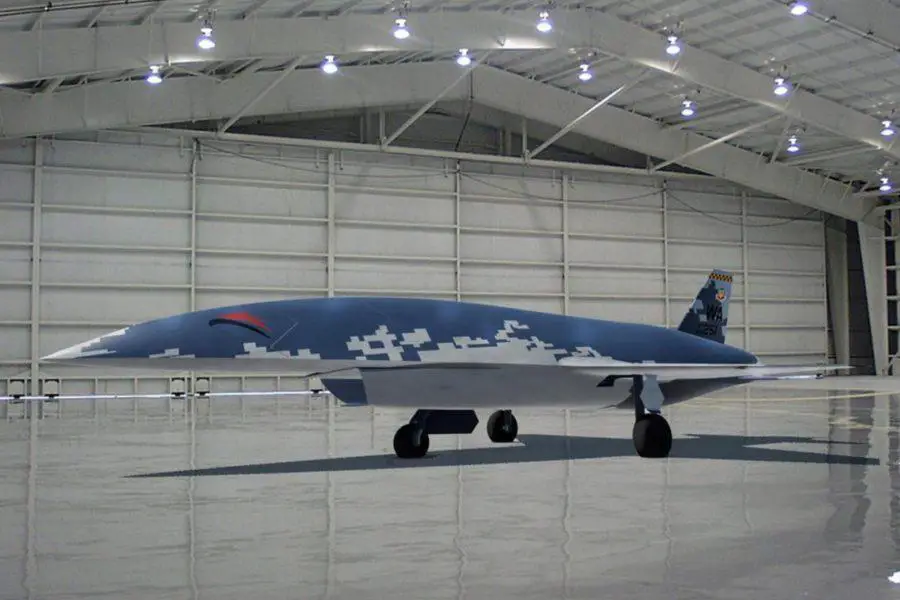The U.S. Air Force Research Laboratory Aerospace Systems Directorate has awarded a Small Business Innovation Research contract to Blue Force Technologies to develop an unmanned air vehicle that supports adversary air (ADAIR) training missions. The Bandit program contract was awarded as the result of a Strategic Financing (STRATFI) proposal selected by AFWERX with a $9 million initial value and options to complete the design and build of up to four air vehicles. Under the Bandit program, Blue Force Technologies, a small aerospace and defense company based in North Carolina, will mature a high-performance unmanned air vehicle design that pilots of Air Force fighter aircraft can use to train against. The air vehicle is a part of a proposed autonomy-based system providing adversary air training for Air Force, Navy and Marine Corps fighter crews at greatly reduced costs compared to current manned capabilities.
The 12-month effort will mature the vehicle design to critical design level, perform engine ground testing and validate the design of the engine installation under the technical guidance of AFRL subject matter experts. Options under this contract, if exercised, will complete the design and engineering tasks, produce up to four air vehicles and complete initial flight testing. The Bandit program aims to provide an air vehicle solution for the unmanned ADAIR capability which, when integrated with autonomy, mission payloads and sensors, will revolutionize the adversary air training mission and provide key opportunities for pilots to interact with the unmanned systems in a training environment. SBIR work with Blue Force Technologies began in 2019 and covered the initial requirements development, vehicle design, analysis and build of a structural test article supporting unmanned ADAIR.
The SBIR program was established by Congress in 1982 to fund research and development (R&D) by small businesses of 500 or fewer employees. Eleven federal agencies participate in the program, including the Department of Defense.
The STTR program was established in 1992 to fund cooperative R&D projects with small businesses and non-profit U.S. research institutions, such as universities. Five federal agencies participate, including the Department of Defense. Both programs focus on projects and services with the potential to develop into a product for military or commercial sectors.
AFWERX, as the innovation arm of the Department Air Force and a directorate of the Air Force Research Laboratory, transitions agile, affordable, and accelerated capabilities by teaming innovative technology developers with Airmen and Guardian talent. AFWERX has three key components: AFVentures, Spark, and Prime. AFVentures expands the defense industrial base for advanced technologies, Spark empowers Airmen and Guardian talent, and Prime drives transition to operational capability. By teaming across academia, industry, investment, interagency, and international partners, AFWERX expands technology, talent, and transition of innovative capabilities.
Blue Force Technologies (BFT) team is a mix of aerospace and mechanical design, engineering, analysis, simulation, manufacturing experts who have been designing and building aerospace and defense systems for over 25 years. BFT is a disciplined and qualified organization with integrated project teams including engineering, technicians and program management. BFT’s Advanced Rapid Prototyping system allows the company to rapidly build prototype aircraft, defense and space systems – giving our customers a 12 – 30 month schedule advantage. BFT’s team of world-class engineers and technicians are focused on delivering innovation and value while maintaining industry standards. Blue Force provides excellent Finite Element Analysis capabilities including fully composite analysis. This allows Blue Force to uniquely design aerospace structure to meet the objective load, harmonic analysis, flutter analysis, and other application specific techniques coupled with extensive allowables database. This includes own database of allowables for the Blue Force advanced infusion system that support incorporation of uni and core details.
AFRL is coordinating the Bandit program with Air Combat Command and has aligned the vehicle development effort in support of the unmanned ADAIR capability. ACC Commander Gen. Mark Kelly addressed the need for alternate approaches to costly adversary air sorties at the Air Force Life Cycle Management Center’s Life Cycle Industry Days in August 2021. The Air Force Research Laboratory (AFRL) is the primary scientific research and development center for the Department of the Air Force. AFRL plays an integral role in leading the discovery, development, and integration of affordable warfighting technologies for our air, space, and cyberspace force. With a workforce of more than 11,500 across nine technology areas and 40 other operations across the globe, AFRL provides a diverse portfolio of science and technology ranging from fundamental to advanced research and technology development.
















